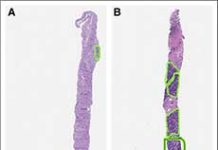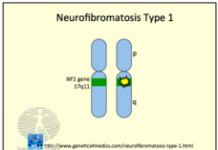The International Childhood Cancer Outcome Project resulted in 17 core sets of 7–11 items per childhood cancer type (5 haematological malignancies, 4 central nervous system tumours and 8 solid tumours), amounting to a total of 24 physical, psychosocial, and neurocognitive outcomes for childhood cancers. The project participants were able to define this set of outcomes by an extensive two-round Delphi process, including an international expert’s panel and survivors of childhood cancer.
A joint international consensus statement for measuring quality of survival for patients with childhood cancer is published by Rebecca J. van Kalsbeek, PhD student in the Princess Máxima Center for Pediatric Oncology in Utrecht, The Netherlands, and colleagues from the International Childhood Cancer Outcome Project on 15 June 2023 in the Nature Medicine.
The authors wrote in the background that most children and adolescents receiving modern cancer treatment survive at least 5 years beyond diagnosis. Substantial reductions in mortality over the past decades have been reached through treatment progress and improved supportive care. Despite these promising results, survival rates remain poor for specific childhood, adolescent, and young adult cancer types.
In addition, if a cure is achieved, it is often compromised by adverse physical, psychosocial, and neurocognitive effects that may substantially impact quality-of-life (QoL). Prevention, identification, and timely treatment of these adverse health outcomes among patients and survivors is one of the main pillars of supportive and follow-up care. Paediatric cancers, which include many rare subtypes with a substantial collective health burden, could benefit from international standardisation of outcome measures.
The International Childhood Cancer Outcome Project was coordinated by a project group with representatives from the Princess Máxima Center for Pediatric Oncology in The Netherlands and St Jude Children’s Research Hospital in the USA and survivor representatives. Project participants included individuals who survived childhood cancer and international healthcare providers like paediatric oncologists, other medical, nursing, or paramedical care providers, and psychosocial or neurocognitive care providers to allow outcome-based evaluation of childhood cancer care.
A survey among 87 healthcare providers and online focus groups of 22 survivors resulted in unique candidate outcome lists for 17 types of childhood cancers. Four online focus groups were organised for survivors: one each for those who are at least 18 years old with a history of a childhood haematological malignancy (6 participants), central nervous system tumour (6 participants) or solid tumour (7 participants), and a separate focus group for adolescents 12 to 18 years old of whom 2 participants were diagnosed with brain tumours and 1 with osteosarcoma.
In a two-round Delphi survey, 435 healthcare providers from 68 institutions internationally contributed to the selection of 4 to 8 physical core outcomes (for example, heart failure, subfertility, and subsequent neoplasms) and 3 aspects of QoL (physical, psychosocial, and neurocognitive) per paediatric cancer subtype. Response rates for round 1 was 70–97% and 65–92% for round 2.
Core outcomes identified for all types of central nervous system tumours are cause-specific mortality, overweight, subfertility, subsequent malignant neoplasm (including meningioma), hypothalamic–pituitary dysfunction, motor problems, physical aspects of QoL, psychosocial aspects of QoL, neurocognitive aspects of QoL; and temperature dysregulation, stroke, visual problems for cranio-pharyngioma; posterior fossa syndrome, hearing problems for embryonal tumours; visual problems for low-grade glioma; and seizures for high-grade glioma.
Core outcomes identified for all types of haematological malignancies are cause-specific mortality, overweight, subfertility (except for Langerhans cell histiocytosis), subsequent malignant neoplasm (except for Langerhans cell histiocytosis), physical aspects of QoL, psychosocial aspects of QoL, neurocognitive aspects of QoL; and pulmonary dysfunction, neurodegenerative Langerhans cell histiocytosis, hypothalamic–pituitary dysfunction for Langerhans cell histiocytosis; heart failure, osteonecrosis, chronic graft-versus-host disease (GvHD) for acute lymphoblastic leukaemia; heart failure, chronic GvHD for acute myeloid leukaemia; heart failure, myocardial infarction for Hodgkin lymphoma; and heart failure for non-Hodgkin lymphoma.
Core outcomes identified for all types of solid tumours are cause-specific mortality, overweight, subfertility, subsequent malignant neoplasm, heart failure, physical aspects of QoL, psychosocial aspects of QoL; and renal insufficiency, hearing problems for liver tumour; male sexual dysfunction, hearing problems for extracranial germ cell tumour; disfigurements, reduced joint mobility for Ewing sarcoma; reduced joint mobility for osteosarcoma; renal insufficiency for kidney tumour; hearing problems for neuroblastoma; disfigurements for non-rhabdomyosarcoma soft tissue sarcoma; and disfigurements for rhabdomyosarcoma.
The core set should be interpreted while acknowledging that an outcome prioritised on the aggregated level might not seem relevant for the individual or, alternatively, highly relevant outcomes on the individual level might not be part of the core set. Furthermore, the 17 types of childhood cancers represented do not include all types of childhood cancers. This resulted partly from the relevance for the participating centers (for example, retinoblastoma is not treated at the Princess Máxima Center) or the infrequency of certain childhood cancer types (for example, thyroid carcinoma).
The authors wrote that the core set can be used to evaluate the balance between survival and quality of survival for patients and survivors to measure progress within an organisation, but also to benchmark with other institutions and identify best practices. The successful development of the International Childhood Cancer Core Outcome Set is only the starting point of the implementation of outcome-based evaluation of quality of care.
Apart from the involvement of survivor representatives and diverse healthcare providers throughout the project, additional elements, including leadership, engagement, a high-quality database, balance between patient- and provider-report and frequent communication of results are also crucial facilitators for the adoption of these core sets in clinical practice and the subsequent initiation of quality improvement efforts.
Reference
van Kalsbeek RJ, Hudson MM, Mulder RL, … & the International Childhood Cancer Outcome Project participants. A joint international consensus statement for measuring quality of survival for patients with childhood cancer. Nature Medicine 2023;29:1340-1348.







